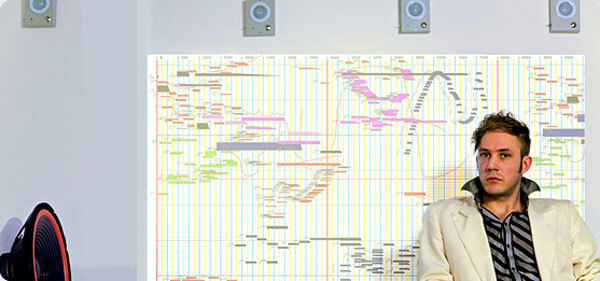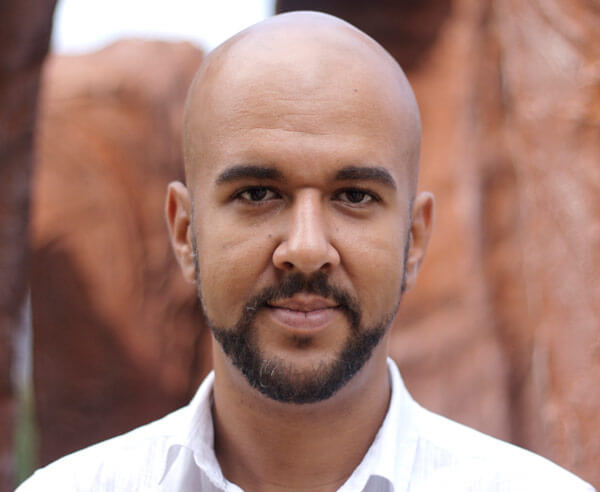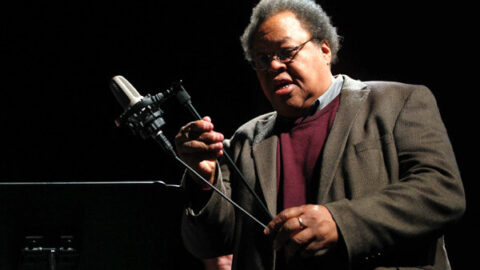 Every autumn since 1980, Bowling Green State University has transformed into an international hub of new music for the annual Bowling Green New Music Festival. Renowned performers and composers converge upon this college town in northwest Ohio for a marathon of contemporary music concerts in diverse genres and styles. Prior festivals have presented a hall-of-fame of new music artists, including composers John Cage, Philip Glass, Pauline Oliveros, and George Crumb and ensembles such as the Jack Quartet, Philip Glass Ensemble, and International Contemporary Ensemble (ICE). George E. Lewis, Professor of American Music at Columbia University, was this year’s featured guest composer and Chicago-based Ensemble Dal Niente served as featured performers. The four day festival, produced by Kurt Doles, Director of the Midamerican Center for Contemporary Music at BGSU, was jam-packed with events.
Every autumn since 1980, Bowling Green State University has transformed into an international hub of new music for the annual Bowling Green New Music Festival. Renowned performers and composers converge upon this college town in northwest Ohio for a marathon of contemporary music concerts in diverse genres and styles. Prior festivals have presented a hall-of-fame of new music artists, including composers John Cage, Philip Glass, Pauline Oliveros, and George Crumb and ensembles such as the Jack Quartet, Philip Glass Ensemble, and International Contemporary Ensemble (ICE). George E. Lewis, Professor of American Music at Columbia University, was this year’s featured guest composer and Chicago-based Ensemble Dal Niente served as featured performers. The four day festival, produced by Kurt Doles, Director of the Midamerican Center for Contemporary Music at BGSU, was jam-packed with events.

Wednesday, October 16
San Francisco-based artist Pamela Z opened the festival with a performance within her multimedia installation at the Dorothy Uber Bryan Gallery, Baggage Allowance, a collaboration with Terry Adkins. She sang and recited poetry, expressively manipulating her voice by moving her hands in front of her custom controller’s sensors. The gallery space also featured Lewis’ interactive multimedia installation Hidden Flows.
Thursday, October 17
The day opened with a lecture by Lewis in which he discussed intertextuality in his music and played works from his catalog that showcased his omnivorous interests. Memorable pieces from the first concert, which immediately followed, included Mario Lavista’s Marsias. As crystalline chords evolved from the choir of six singing glasses behind her, BGSU faculty oboist Nermis Meisis delicately shaped the piece’s short melodies. Closing the concert was Richard Carrick’s Harmonixity, which the student saxophone quartet pulled off with aplomb. Precarious chorales gave way to slow and disjointed melodic lines comprised of repeated notes, mimicked in unison between the instruments in a very close delay. The effect was bewildering and novel.
Christopher Dietz’s Thicket opened that evening’s concert, a bassoon quintet originally commissioned by Dark in the Song. The ensemble, conducted by Dietz, played dense clusters that moved from the upper range of the instruments to a final woody and impossibly rich chord that evoked the piece’s namesake. The BGSU New Music Ensemble ended the concert with Lewis’ Anthem. Sounding much like a notated free jazz combo bolstered by extra percussion and electronics. Mezzo-soprano Elizabeth Pearse powerfully belted the text, a frightening and fragmented meditation on power.

Featured guests Ensemble Dal Niente played their first appearance on the festival at the Clazel Theater in downtown Bowling Green alongside BGSU graduate student ensembles. The informal club atmosphere was a good setting for more experimental works like Alvin Lucier’s Silver Streetcar for the Orchestra, which percussionist Mark Cook played with metronomic accuracy on a single amplified triangle. Stefan Prins’ Piano Hero No. 1 featured Dal Niente pianist Mabel Kwan triggering video and audio samples with each sampler key press, manipulating footage of someone abusing the inside of a piano. Provocateur Johannes Kreidler, who was in attendance, presented his Chart Music and Fremdarbeit (“Outsourcing”), both irreverently cheerful pieces on the grim economic realities of the modern world. Dal Niente closed with Marcos Balter’s Growth, a slow-burning timbral exploration. Like its title suggested, the piece continually expanded in register and volume.
Friday, October 18
Highlights from the third day of the festival included Kurt Isaacson’s color boundaries and plastic action/red ground behind my eyelids for piccolo and soprano saxophone. Elise Roy and Matthew Younglove, for whom it was written, alternated unforgivably shrill chords with rapid, breathy figurations in a visceral and arresting experience. Alex Mincek’s tightly wound and energetic Nucleus violently alternated between contrasting rhythmic textures. The extended timbral range of Noa Even’s tenor saxophone allowed her to blend with the sensitive varieties of attacks in Stephen Klunk’s drum set, creating the effect of a hybrid solo instrument more than a duo.
Ensemble Dal Niente gave a full concert Friday evening, demonstrating the breadth and refinement of their repertoire. Rebecca Saunders’ Stirrings Still II opened the concert. Sparse and ethereal melodic fragments drifted from the players spread around cavernous Kobacker Hall, complementing Mark Buchner’s resonant bass on a blue-lit stage. The occasional ringing of bowed crotales, completely hidden from view, was a charming surprise. George Lewis’ raucous Assemblages received its world premiere by the entire ensemble, full of special effects and barely-controlled chaos. Dal Niente also premiered BGSU professor of composition Mikel Kuehn’s Undercurrents, a contrapuntally detailed yet spacious work that faded to a quiet conclusion, resonating throughout the hall.
The concert ended with Salz, by Enno Poppe, a 15-minute crescendo bolstered by Winston Choi on organ sampler. In particular, violist Doyle Armbrust’s snaking, delicate lines that began the piece and percussionist Gregory Beyer’s intricate and powerful rhythms that ended it anchored Dal Niente’s exuberant virtuosity.
Saturday, October 19
Saturday began with a concert of music by the winners of the BGSU Young Composers Competition and composition students from the Toledo School of Arts. All of the promising young composers were in attendance and gave short program notes from the stage.

Saturday’s penultimate concert was entirely electroacoustic, with live performers aided by a variety of electronic media. Marcos Balter’s Cardinal for baritone saxophone received its world premiere. Aided by a healthy dose of delay and reverb, Dal Niente saxophonist Ryan Muncy let forth a stream of constantly clicking keys, with ghostly pitches emerging from a turbulent veil of air. Jeff Manchur performed Timothy Roy’s Wunderkind for toy piano and live electronics with sensitivity and power despite the diminutive size of the instrument. Carter John Rice’s Building Fractures employed samples of breaking objects, including glass and celery stalks, while mezzo-soprano Elizabeth Pearse sang a similarly disjointed text about the nature of fracturing. Pianist Stephanie Titus and flutist Elise Roy aided her splendidly. Matthew McBride-Daline played John Drumheller’s “The View From Dead Horse Point.” for viola and electronics. After a thick layer of effects brought the somber piece to a climax, it closed with a very simple melodic line and long delay that created a plaintive canon.
The BGSU Wind Ensemble and Philharmonia performed the final concert of the festival on Saturday evening. The first half’s highlight was The Shadow of Sirius by Joel Puckett, with Conor Nelson as flute soloist. Rich, low chords from the ensemble supported Nelson’s lyrical playing, and the Wind Ensemble’s flute section interjected occasionally with floating melodic cells from around the hall. The second half featured, among works by Cindy McTee and Shen Yiwen, the world premiere of Braxton Blake’s clarinet concerto Aria and Toccata, performed by Kevin Schempf with clear phrasing and virtuosity.
It’s not too soon to be planning to attend next year’s Bowling Green New Music Festival when the featured artists will be composer Paul Dresher and the Pul Dresher Ensemble.
























